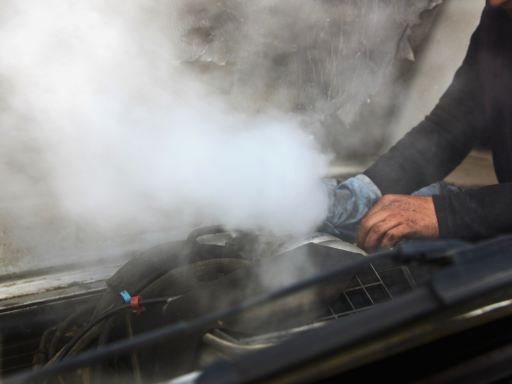Don’t ignore that rising temperature gauge—your engine could be trying to tell you something.
When your engine starts running hot, it’s a clear signal something isn’t right. Whether it happens suddenly or builds up over time, overheating is one of the most serious warning signs your vehicle can give. Left unresolved, it can lead to engine damage, expensive repairs, or complete breakdown.
Most modern vehicles have systems in place to regulate engine temperature and prevent overheating, but when those systems fail—or even start to weaken—you’ll usually feel it pretty quickly.
Engine Overheating – Why It Could Be Happening?
Engines generate a lot of heat, and your cooling system’s job is to keep that heat in check. It does this by circulating coolant through the engine and radiator to remove excess warmth. If that system is compromised, heat builds up and has nowhere to go.
One common culprit is low coolant. This might be due to a leak, evaporation, or failure to top up during routine servicing. Without enough coolant, the system can’t do its job effectively.
Radiator blockages can also stop heat from escaping properly. Dirt, rust, or mineral deposits inside the radiator can reduce flow, causing the temperature to climb. In some cases, an external obstruction—like leaves or debris—can also affect airflow.
Another key part is the thermostat. This small valve opens and closes to regulate coolant flow. If it gets stuck closed, coolant won’t circulate, and your engine will quickly overheat.
Faulty radiator fans are another issue. These fans help cool the radiator when the car isn’t moving fast enough to do it naturally. If the fan motor fails or the sensor isn’t working, airflow is reduced and the temperature rises.
Worn or broken hoses can lead to coolant loss or restricted flow. A collapsed hose may even stop circulation entirely, depending on where it’s located.
Lastly, a failing water pump—the part that pushes coolant through the engine—can cause overheating problems. If the pump’s impeller wears down or the drive belt breaks, the system can’t circulate fluid properly.
It’s also worth noting that overheating problems can be intermittent. You might notice the temperature rising only in heavy traffic, while towing, or on hot days. These aren’t random events—they’re warning signs that your cooling system is under stress. Paying attention to when and how overheating occurs can give mechanics valuable clues to pinpoint the root cause quickly.
What You Should Do
If your temperature gauge is climbing or you see steam under the bonnet, it’s best to pull over safely and turn the engine off. Driving while the car is overheating can cause permanent engine damage.
You can visually check the coolant level once the engine has cooled down, but don’t attempt to open the radiator cap while it’s still hot.
Having the cooling system inspected by a professional is the safest move. Early diagnosis can prevent further damage, save on repair costs, and keep your car running reliably.
Stay Cool with Expert Help
Overheating issues rarely go away on their own. Whether it’s a small leak or a major component failure, Sandgate Auto Electrics can diagnose and repair your vehicle’s cooling system to keep it safe and road-ready.
📞 Call us: 07 3269 3158
📍 Visit: 101 Connaught Street, Sandgate QLD 4017
📧 Email: mail@sandgateautoelectrics.com.au
Stay ahead of overheating—book a cooling system check with our experienced team today.
Useful Resources:

